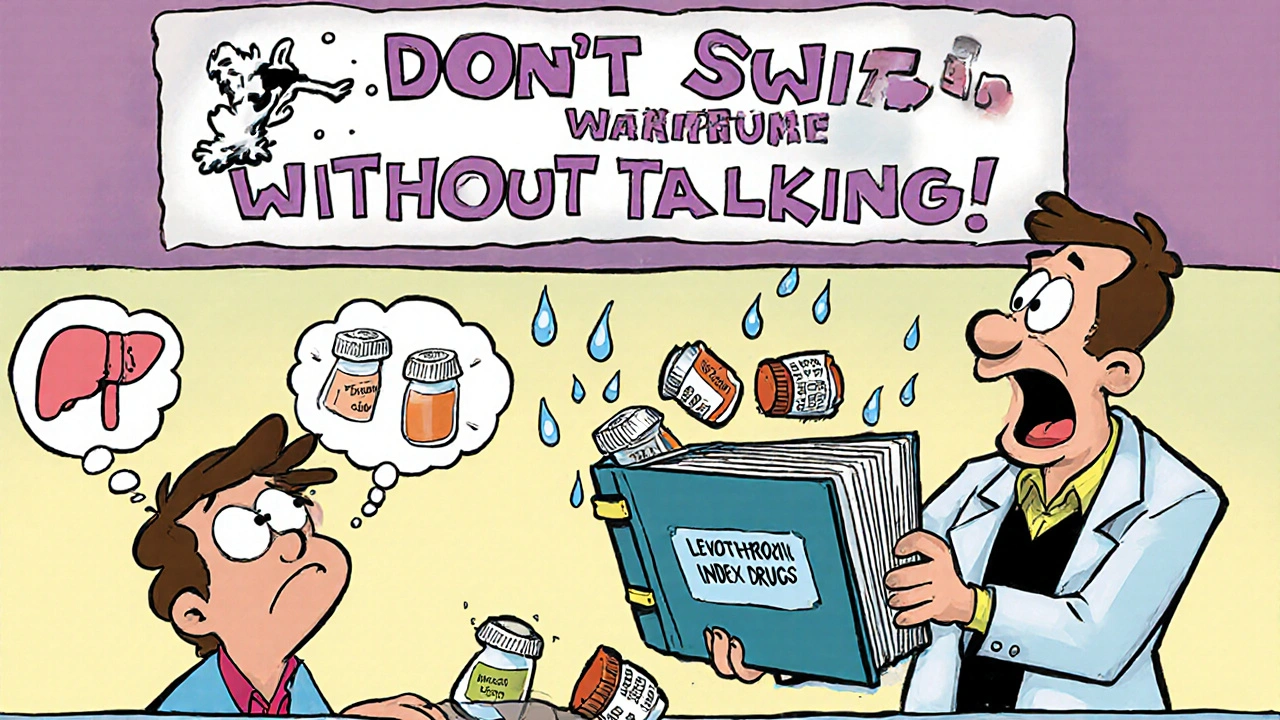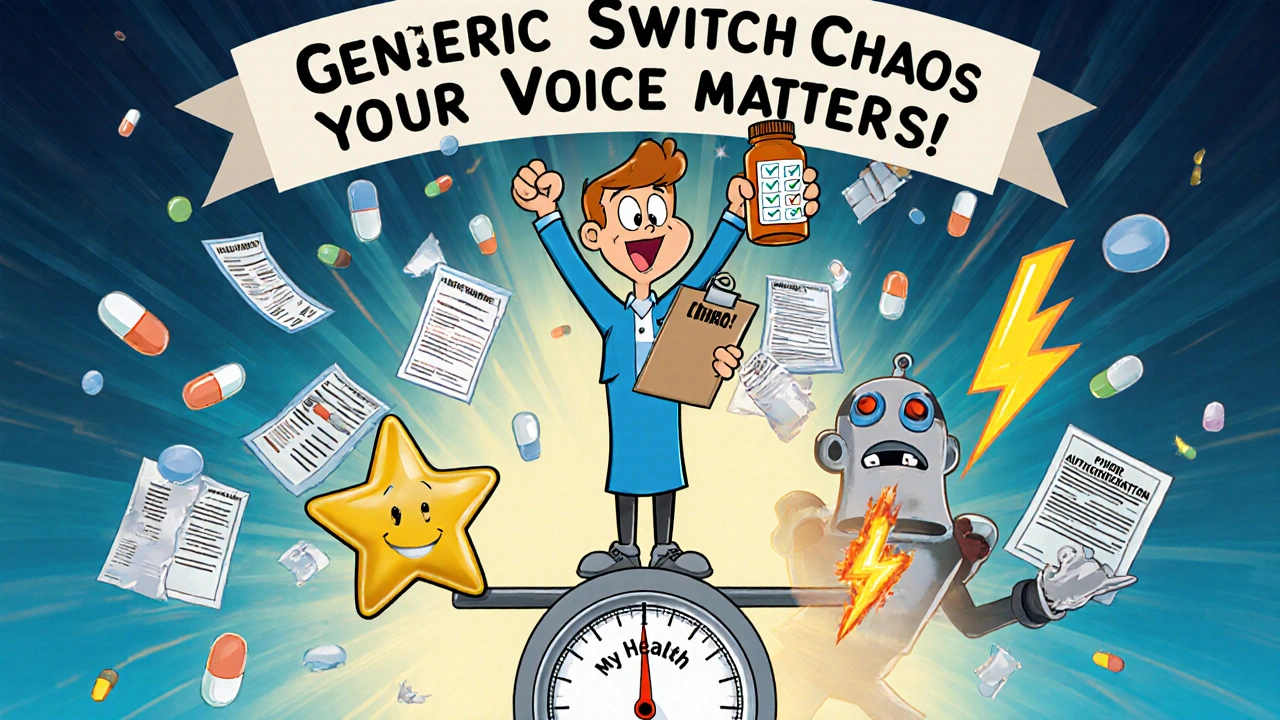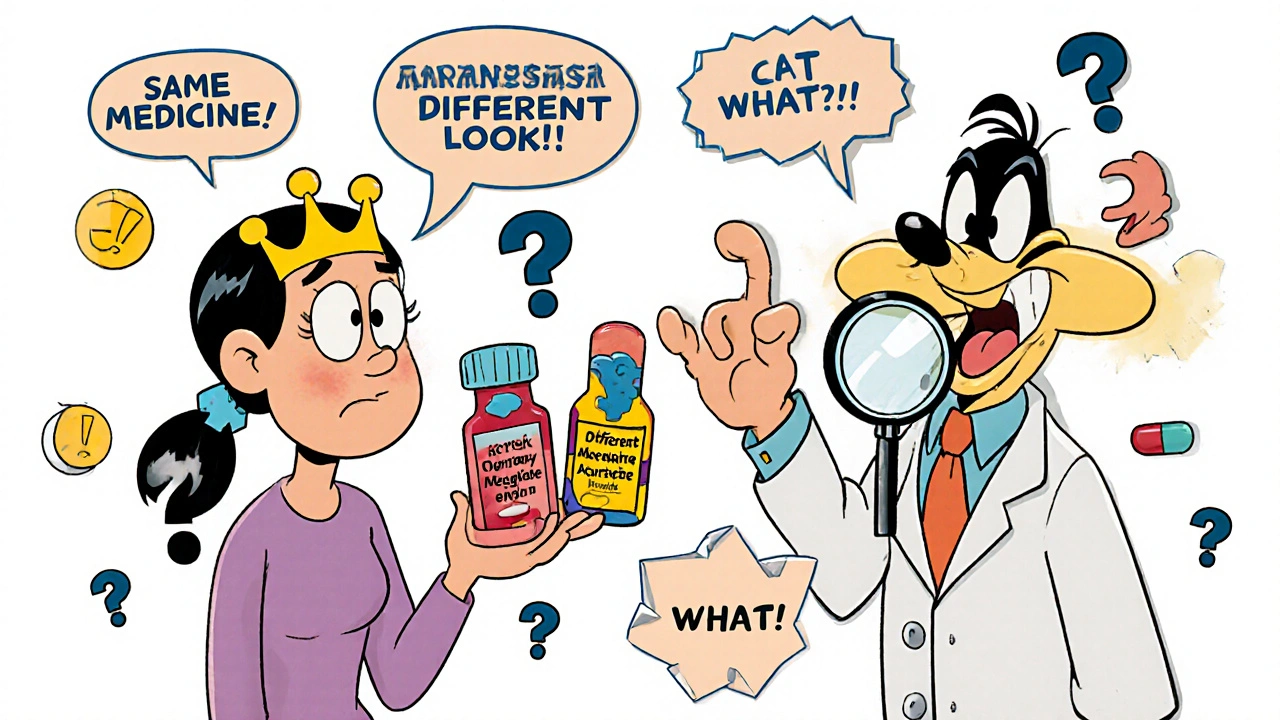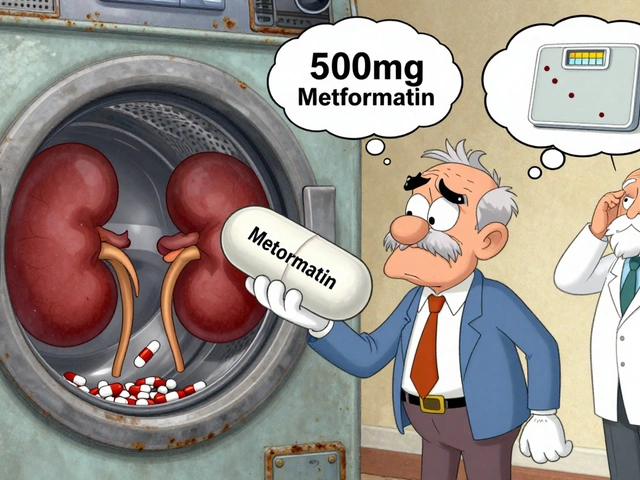Why Generic Transitions Happen - and Why You Need to Talk to Your Pharmacist
Every year, hundreds of brand-name drugs lose patent protection and become available as cheaper generics. This isn’t just a cost-saving trick - it’s a system designed to save patients billions. In 2023, generic drugs made up 90% of all prescriptions filled in the U.S., but only cost 23% of what brand-name drugs did. That’s over $373 billion saved in one year. But here’s the catch: even though generics are just as safe and effective, many people notice changes - in how the pill looks, how they feel, or even how well it works. That’s where talking to your pharmacy becomes essential.
What Exactly Is a Generic Drug?
A generic drug has the same active ingredient, strength, and dosage form as the brand-name version. The FDA requires it to deliver the same amount of medicine into your bloodstream at the same rate. That’s called bioequivalence. For most drugs, this means the generic works just like the brand. But there’s a loophole: generics can differ in color, shape, size, and inactive ingredients like fillers or dyes. These don’t affect how the drug works for most people - but for some, they can.
For medications like levothyroxine (for thyroid), warfarin (a blood thinner), or certain seizure drugs, even tiny differences in absorption can matter. That’s why your pharmacist needs to know if you’ve ever had a bad reaction after switching. It’s not about distrust - it’s about safety.
When Should You Start Talking to Your Pharmacy?
Don’t wait until your last bottle is empty. If your insurance or doctor says your brand-name drug is being switched to a generic, start the conversation at least 30 days before the change. That gives your pharmacy time to:
- Check if your insurance covers the generic (most do, but some require prior authorization)
- Confirm the switch isn’t blocked by your prescriber’s instructions
- See if you qualify for a patient assistance program from the generic manufacturer
- Arrange a supply if the new generic isn’t in stock yet
Many people panic when they see a different-looking pill. One patient on Reddit reported seizures returning after switching from brand-name Keppra to a generic version. That’s rare - but it happened. If you’ve had a bad experience before, tell your pharmacist upfront. They can flag your file and avoid repeating the same switch.

What to Ask Your Pharmacist During the Transition
When you pick up your new prescription, don’t just take the pill and leave. Ask these five questions:
- Is this the exact generic my doctor prescribed? Sometimes, multiple generics exist. One might have a different inactive ingredient than what you’ve used before.
- Why did the pill change color or shape? This isn’t a defect - it’s normal. But knowing why helps reduce anxiety.
- Could this affect how I feel? For drugs with a narrow therapeutic index (like warfarin or digoxin), even small changes can matter. Your pharmacist can tell you if yours is one of them.
- Will my refill schedule change? Ask about medication synchronization - getting all your prescriptions on the same refill date. It cuts down on missed doses and confusion.
- What should I do if I feel different? Get clear instructions: call the pharmacy? Wait a week? Contact your doctor? Write it down.
What Happens If the Generic Doesn’t Work for You?
It’s not your imagination. A 2021 study in JAMA Internal Medicine found that 9.4% of patients on generic antiepileptic drugs had a seizure after switching, compared to 5.3% who stayed on the brand. That’s a real difference. If you notice:
- New or worsening side effects
- Reduced effectiveness
- Changes in how you feel physically or mentally
Don’t assume it’s just "getting used to it." Call your pharmacy right away. Pharmacists can:
- Check if your insurance allows you to stay on the brand (some do, if you document a problem)
- Request a prior authorization from your doctor
- Help you get a different generic version
- Coordinate with your prescriber to switch back temporarily
Medicare Part D plans are required to give you a 90-day window to continue your brand-name drug if you’re newly enrolled or if your medication switches. Use that time wisely. Track your symptoms. Bring your notes to your next appointment.
How Insurance and Pharmacy Systems Play a Role
Your insurance doesn’t just decide if you get a generic - it forces the switch. Most plans put generics on the lowest cost tier. If you want to stay on the brand, you often need your doctor to fight for it. That’s why your pharmacist is your advocate. They see what your insurer is allowing - and they know which switches are automatic and which require paperwork.
Also, thanks to a new DEA rule from August 2023, you can now transfer electronic prescriptions for controlled substances (like pain meds or ADHD drugs) between pharmacies without going back to your doctor. That’s huge. If your brand-name drug is no longer available at your usual pharmacy, you can move your prescription faster - and avoid a gap in treatment.

Real Stories: What Patients Actually Experience
Most people (78%, according to a Healthline survey) report no difference after switching to generics. And 63% say the main benefit is saving money - often $265 per year per medication. But 22% worry the generic won’t work. And 15% report new side effects.
One woman switched from brand-name levothyroxine to a generic and suddenly felt exhausted, gained weight, and couldn’t sleep. Her pharmacist recognized the pattern - thyroid meds are notorious for this. They switched her to a different generic version, and within two weeks, she felt like herself again.
Another man switched from a brand-name blood thinner to a generic and started bruising easily. He didn’t say anything until his next refill. His pharmacist pulled his lab results and saw his INR levels had spiked. They contacted his doctor immediately and switched him back. He didn’t have a stroke - because he talked to someone.
What You Can Do Right Now
You don’t need to wait for a transition to happen. Take action today:
- Keep an updated list of all your medications - including dosages and why you take them. Bring it to every pharmacy visit.
- Ask your pharmacist to note any past issues with generics in your file.
- Set a calendar reminder 30 days before your next refill date - check if your drug is switching.
- If you’re on a high-risk medication (thyroid, seizure, blood thinner, immunosuppressants), ask if your pharmacy offers a medication therapy management (MTM) program. It’s free for Medicare patients and can help you track changes.
- Don’t be afraid to say: "I had a bad experience with this before. Can we check if there’s another option?"
Final Thought: You’re Not Just a Prescription Number
Pharmacies are busy. But you’re not just another script to fill. You’re the one who takes the pill every day. You know your body better than anyone. If something feels off after a switch, speak up. Pharmacists are trained to listen - and they’re the only medication experts you’ll see regularly without an appointment. Your voice matters. Your health depends on it.
Are generic drugs really as safe as brand-name drugs?
Yes. The FDA requires generics to meet the same strict standards as brand-name drugs for safety, strength, quality, and performance. All active ingredients must be identical, and the drug must be absorbed into your bloodstream at the same rate. Over 90% of prescriptions in the U.S. are generics - and they’ve been used safely for decades. The only exceptions are rare cases involving narrow therapeutic index drugs, where even small differences in absorption can matter - and that’s why pharmacist communication is critical.
Why does my generic pill look different from the brand?
Generic manufacturers can’t copy the exact appearance of brand-name pills because of trademark laws. So they change the color, shape, or markings. This doesn’t affect how the drug works. But if you’ve had a bad reaction to a specific generic before, tell your pharmacist. They can avoid prescribing that version again. Seeing a different pill can be confusing - but it’s normal.
Can I refuse to switch to a generic?
Yes - but it’s not always easy. Your doctor can write "Do Not Substitute" on your prescription, which legally prevents the pharmacy from switching it. However, your insurance may deny coverage or charge you a higher copay. If you’ve had a negative experience with a generic, your pharmacist can help you request a prior authorization from your insurer to stay on the brand. This is common for thyroid, seizure, and blood thinner medications.
What if I can’t afford the brand-name drug after the switch?
If your insurance won’t cover the brand-name version and you can’t afford it, talk to your pharmacist. Many generic manufacturers offer patient assistance programs - free or low-cost versions for those who qualify. Some pharmacies also have discount cards or coupons. Medicare Part D has a catastrophic coverage phase that kicks in after you spend a certain amount - your pharmacist can help you track that. Never skip doses because of cost. There’s always a solution.
How do I know if a generic is working properly?
For most drugs, you’ll know if it’s working because your symptoms stay under control. But for medications like warfarin, levothyroxine, or epilepsy drugs, your doctor will order regular blood tests to check levels. If you feel worse after switching - more fatigue, more seizures, more anxiety - don’t ignore it. Call your pharmacy. They can check if your dosage needs adjusting or if another generic version might work better. Tracking your symptoms for the first 2-4 weeks after a switch helps your doctor make better decisions.
Can my pharmacy switch my medication without telling me?
In most cases, no. Pharmacies are required to notify you when a generic substitution is made - unless your doctor specifically wrote "Dispense as Written" on the prescription. Even then, if your insurance forces a switch, the pharmacy must still inform you before filling it. If you didn’t know about a switch and you’re now having problems, ask for a copy of your prescription history. You have the right to know what you’re taking.





Shannon Amos
November 26, 2025 AT 17:41Wendy Edwards
November 27, 2025 AT 07:44Jaspreet Kaur
November 28, 2025 AT 17:31Gina Banh
November 30, 2025 AT 11:29Deirdre Wilson
December 2, 2025 AT 08:39Damon Stangherlin
December 3, 2025 AT 18:37Ryan C
December 4, 2025 AT 00:01Dan Rua
December 4, 2025 AT 21:13Mqondisi Gumede
December 5, 2025 AT 13:50Douglas Fisher
December 6, 2025 AT 09:51Albert Guasch
December 8, 2025 AT 04:21Ginger Henderson
December 10, 2025 AT 03:34Bethany Buckley
December 11, 2025 AT 10:43